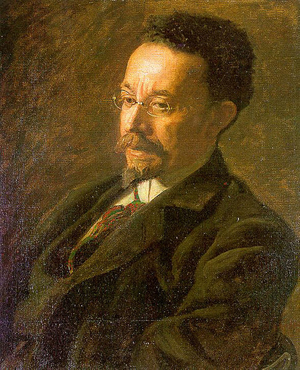BUDAPEST, Hungary (AP) – A tug-of-war in the United States over who owns a huge art trove seized by Hungary’s Nazi henchmen is the most prominent example of disputed restitution policies in formerly communist eastern Europe – but by no means the only one.
Heirs of Jewish banker Baron Mor Lipot Herzog filed suit last week against the Hungarian government in U.S. District Court in Washington. They also are suing several state-owned museums to try to recover the works.
But uncounted other works and collections hanging on museum walls in Bucharest, Belgrade or Budapest also were once the property of Jews, who were coerced into handing them over by Germany’s Nazi allies or simply abandoned them as they fled for their lives.
Other examples of the expropriated art are unlikely to be as valuable as the works claimed by the Herzog heirs – which includes El Grecos, van Dycks, Velazquez and Monets and is estimated to be worth more than $100 million.
But collectively, the paintings, sculptures and other objets d’art scattered across Russia, the former Soviet bloc and other previously communist European nations may exceed that amount.
Nobody knows – because in most cases there are either no reliable records of how the museums came to ownership, or no laws governing restitution. In some cases both are lacking.
A paper presented last year at a Prague conference reviewing the restitution records of dozens of countries endorsing the return of Jewish property found some fault with most European nations on the issue. But it gave the worst grades to Russia, the Soviet Union’s former European republics, and those of the now dissolved communist Yugoslavia.
Of the 18 countries in this category, the overview – drawn up by the Claims Conference and the World Jewish Restitution Organization – found that only the Czech Republic and Slovakia had both enacted restitution laws governing art and were conducting provenance research.
It named Belarus, Bosnia, Bulgaria, Estonia, Hungary, Latvia, Lithuania, Macedonia, Poland, Romania, Serbia, Slovenia and Ukraine as countries that did not “appear to have made significant progress” in implementing 1998 commitments. Such responsibilities include establishing the origin of suspicious art works, developing legal processes for restoration and proactively seeking out Jewish heirs of such works.
Before the Holocaust, Jews owned property in Europe worth between $10 billion and $15 billion at the time, according to a 2007 study by economist Sidney Zabludoff.
Most was taken and never returned or paid for, translating into a missing $115 billion to $175 billion in current prices, the study said. Initially, many Western European governments paid restitution for only a fraction of the stolen assets, while Eastern European countries in the Soviet bloc paid almost nothing at all, it said.
“There were Jewish people of substance in these various countries who owned art,” notes Judah Best, a Washington lawyer and a commissioner of the Smithsonian American Art Museum in Washington. “They either bargained their art away to escape, or they never escaped.”
Part of the reason for the lack of transparency in the East may be decades of scant attention to the region during its time on the other side of the Iron Curtain.
With the international focus on them, Germany and Austria have long enacted – and enforced – laws regulating returns of art looted by the Nazis. Many other West European nations have followed suit or are in the process of doing so.
But most nations in the former Soviet bloc are lagging.
Restitution was not an issue while communists ruled. The Soviet Union raided Germany and other enemy territory for art troves in the dying days of World War II – and thus indirectly looted tremendous amounts of art confiscated by the Nazis from the Jews. To date, there is no record of any such pirated art being directly returned by the Kremlin to Jewish heirs.
In contrast wartime culprits Germany and Austria had no choice but to bow to international pressure for restitution.
Since 1996, when Austria auctioned off unclaimed looted artworks for the benefit of the Jewish community, the nation’s museums have handed back about 13,000 objects, according to the overview presented at last year’s Prague conference. However, some settlements came only after years of litigation in foreign courts.
Russia enacted legislation in 1998 and in 2000 purporting to allow claims. But it “has returned nothing to Holocaust victims since the passage of the law, although it sold some family items to the Rothschild Family,” said Charles A. Goldstein, counsel of the Commission for Art Recovery.
“Compare this to Austria, which is making a systematic search of its state collections and is returning stolen items when they are discovered even without request,” he said.
The Hungarian government had a terse response Friday to the suit filed three days earlier in U.S. District Court by the Herzog heirs after more than two decades of legal maneuvering – simply noting that a high Hungarian court had ruled in its favor on ownership.
But critics argue that court’s decision was flawed and reflects concerted government efforts to hold on to art of questionable provenance.
“The Hungarian experience may be described as a total and concerted effort by successive governments to keep the looted art in their museums,” Agnes Peresztegi, European director of the Commission for Art Recovery, said in a 2008 report.
In contrast, she noted, the government is “very active in making claims for art displaced from Hungary during World War II” but loses interest in pursuing such claims when asked to return repatriated art to the heirs of Jewish owners.
“Hungary has never faced its past and has never bothered to establish a historical commission to examine Hungary’s war time activities,” she argued, alluding to the atrocities committed by Hungary’s Nazi henchmen before the Soviets marched in.
___
Associated Press writers Karel Janicek in Prague and Mark Lavie and Amy Teibel in Jerusalem contributed to this report.
Copyright 2010 Associated Press. All rights reserved. This material may not be published, broadcast, rewritten, or redistributed.
AP-ES-08-02-10 0622EDT




